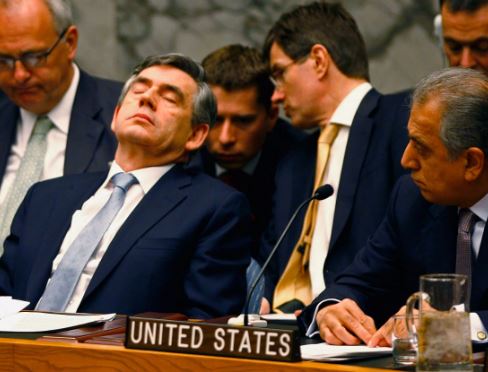Gayle Allen continues to serve up some of the best leadership professional development I consume. If you attend meetings, lead meetings or consider yourself a victim of weak meetings (you have to be one of three), listen to this Curious Minds interview with @stevenrogelberg – Professor of Organizational Science, Management, and Psychology at the University of North Carolina or share this post with your meeting leader – possibly? Afterwards, add Gayle Allen’s podcast to your todo or podcast app list. At the the end of the post – there is a treat for you too.
Not a meeting – an event
Steven Rogelberg has over two decades invested in researching meetings so when he says that getting rid of meetings is a “false goal,” I do not consider his advice to be self-serving, rather our goal should be to “eliminate bad meetings.” I think we would all agree on that. According to wider research, most employees invest nearly 15 hours a week in meetings and yet, nine out of 10 employees admit to daydreaming, attending meetings is the number one most complained about activity within companies, quod erat demonstrandum, schools? Too few leaders receive training or guidance on how to lead meetings and even fewer on how to attend and contribute effectively.
Teachers and school leaders? This from Teacher Tapp. Over half of you had a departmental or year group meeting last week and most schools seem to be buzzing with students or parents taking part in open evenings, school clubs and performances every week. Just 6% of you had no scheduled or unscheduled meetings at all.

Not overlooking the direct and opportunity costs of ineffective or weak meetings (attendees could be doing something else with their time) Rogelberg suggests that bad (I prefer weak) meetings have a greater cost – frustration, disengagement and ‘meeting recovery syndrome’ where staff ruminate and co-ruminate, often destructively. Weak practice than repeated and modelled down the organisational river.
Hosting a productive meeting is nuanced and it is complex – there are a number of moving parts, and it is much more than having an agenda and bringing cakes.
Leading events meetings
Less than 20% of managers receive any training on how to lead a meeting.
Dr Steven Rogelberg – Curious Minds podcast
I would have fallen into that rather worrying low percentage category. If I am honest, I am surprised 80% have received training.
Interestingly, the first point Rogelberg highlights is that meeting leaders need to get feedback on… their meetings. I’d say they need to get feedback full stop. However, he also offers three questions very similar to those I shared just recently, on what to ask for when seeking professional feedback or review from your colleagues (superior and subordinate); I added one method of how to ask.
- What I am do well?
- What should I continue doing?
- What should I start doing?
Event efficiencies
Who should be there? Who needs to be there? Where is ‘there’? Then evaluating one’s own stewardship of the meeting or event.
The research shows that having an agenda, in of itself, does not predict meeting effectiveness. What gets on the agenda? How do you choose what items / questions to put on the agenda? How you facilitate the agenda – does matter. It also impacts on a whole host of complex and competing variables. Venue, length, relationships and communication networks. Just take one simple point – standing or seated meetings. Both are equally effective, standing meetings much shorter. However, if it is a longer agenda, seating may be required. See Parkinson’s Law.
Easy wins and greasing the meeting wheels
“Meetings as events,” changes our framing of meeting and minimises “repeated dysfunction.”
Rogelberg noted that approximately 50% of all agendas are recycled from the last meetings. Avoid ground hog day.
Short meetings are more productive however allocated time is a key factor. 3 x 20 minute meeting are more effective, allow targeting of attendees, than a 60 minute meeting.
Assign sections on the meeting to be chaired by others.
Sending agenda questions in advance give attendees the opportunity to a) know what success we are aiming for b) decide whether they have anything of value to contribute or learn and attend or decline c) responded to in advance.
- items / questions can be struck off and concluded prior to the meeting being held in some instances
- co-designed – promoting agency
- the agenda, the minutes, and as it is live, becomes a monitoring document that does not need to be sent at the end meeting
Structure the agenda by “questions to be answered.” This was probably one the key takeaways for me from the podcast. Re-crafting the agenda item from ‘problem to finding solutions,’ and hence the tone of the expected responses. eg
- Year 8 girls not staying on their designated areas during wet breaks – becomes…
- How do we ensure Year 8 girls use their designated space respectfully during wet breaks
Agenda items / questions at the start of an agenda get a disproportionate amount of discussion time – prioritising, scheduling or time reference agenda items / questions.
Not every attendee is required for all and every item or question. Schedule the agenda and schedule the staff, so that they only attend where appropriate. Adjusting meeting group attendance has additional benefits too, reducing conversation flow and conflict (most often with the person sitting across from you).
Influence conversation flow by thinking where attendees sit and in what layout – standing or seated.
Attention in longer meetings can be expected / directed when short breaks are afforded. Again, remember the restart minutes are most effective.
Considering the venue, the welcome, the hospitality shows you value for your attendees time. However, not as much as stewarding their time effectively and productively.
Recognise the contribution of others.
Closing really matters. Who are the “directly responsible individuals?” What are they responsible for? As I noted, the meeting document can be much more than merely an agenda. Sharing the meeting minutes, if you use a shared document, is no longer a concern.
Managing conflict
One of the issues sensitively reviewed by the interview pairing, Allen and Rogelberg, was handling conflict. Suggestions included often attendees to writing their responses, keeping the focus on the ‘ideas’ and not the person that raises the idea, plus there were a few points later on in the interview that could be considered (seating). Rogelberg also spoke about meeting safety, again similar to the concept of psychological safety. It is possible to connect the role of leader as host here; meeting and greeting attendees, ensuring they are welcomed and appreciated and making introductions where appropriate. Conceiving the role, not as meeting leaders, rather embracing your role as a steward of “other people’s time.”
Parkinson’s law – as a meeting extends, so does the dysfunction within the meeting. Schedule the meeting strategically, precisely, as attendees are more productive at the start and when placed under a little pressure. Plan for short breaks, then insist on attention and focus.
We certainly experienced this benefit when holding SLT meetings within the school day as opposed to at the end. Meetings starting at 3:15pm would often be delayed, then trundle and meander through the agenda, with AOB items casually tagged on at the end. Tight meetings scheduled within the school day (period 4) were punchy, staff made a real effort to get there promptly, many coming straight from the classroom, and we were less tolerant of distraction and interruption. As we adapted to collaborative agenda construction, pre-meeting updates / comments on the shared document, staff leading their agenda items, meeting delivery speed up dramatically. One meeting was almost cancelled completely when 6/8 items were struck off before the meeting.
Meeting size
Meeting size – when I hear about meeting size, I am reminded of Jeff Bezos’ pizza meeting rule. Meeting leaders err on inclusion. Rather than that invite everyone to the meeting, offer extended colleagues the opportunity to;
- pay-it-forward and contribute comment ahead and to of the meeting group
- share the agenda question, for which a response will be shared
- offer to share the meeting minutes and encourage their reflections
- or, as noted, invite the extended team member a scheduled agenda topic and allow them to leave. (Note this requires sensitivity from the meeting host, as in my experience, in education, leaving a meeting early is still perceived as improper).
The power silence
Silence is a powerful meeting tool and one I was really interested in hearing more about as I have only ever attended conversational meetings. Rogelberg talked about the use off online voting tools to capture the feedback of all attendees. (I have used post meeting forms to capture staff meeting feedback). Also silence to use meeting to for learning – eg reading, in silence, a white paper before discussing it. (Not sure how I feel about that.)
Remote meetings – suffers from attendees multi-tasking. They need to be tighter and shorter.
Leading events meetings
As a senior leader, we should really investigate how new leaders intend to lead meetings. Given the time committed to them and the potential impact of weak meetings. Ultimately, our success as a leaders – eventually comes down to our ability to get the most out of others. Meeting are a key leveraging opportunity, if we get it right for the attendees. Communication steers our organisation. Morning huddle, post day wash-up or agenda meeting? Over to you.
Participate or Else! The Effect of Participation in Decision-Making in Meetings on Employee Engagement Yoerger, M., Crowe, J., & Allen, J.A. Consulting Psychology Journal: Practice and Research, 2015


